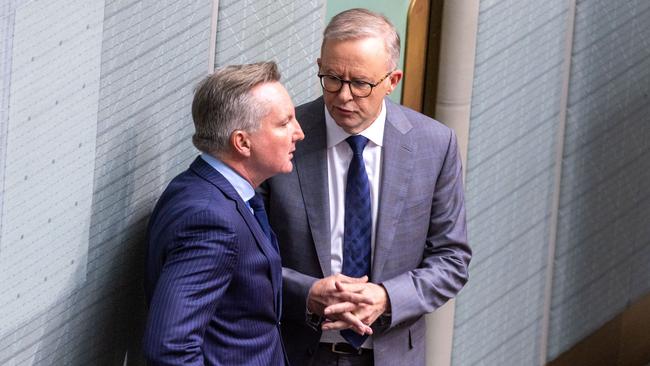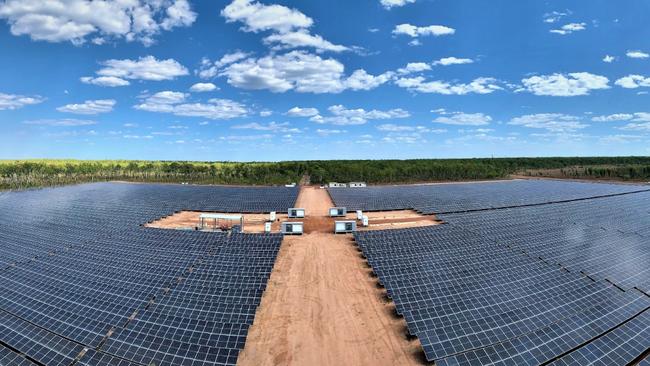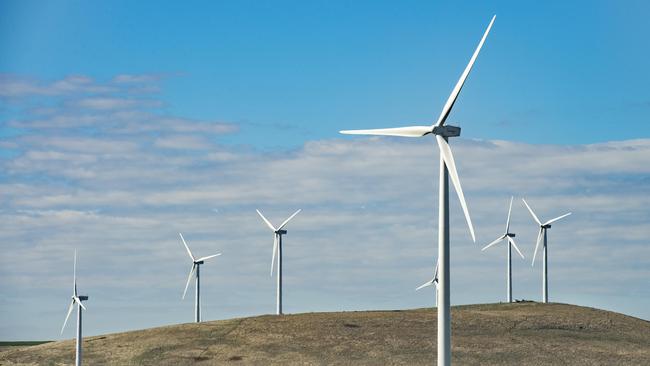The government is gambling our energy future on a flawed plan

It is doing so using solar and wind in a way that is markedly different from comparable countries. This imposes risks on the entire economy. It may cost well more than $500bn.
The textbook approach to transforming our energy system in this way would be to determine the best policy settings in terms of an optimal economic path. The first step would be to determine the mix of things such as welfare, emissions reductions, economic and technological development, environmental impact and so on that are to be considered.
Next consider the full economic costs of all feasible technological options and trajectories. Then develop a transition plan that maximises across this mix.
This is basic economics. But there is no evidence that any of it is being done.
When questioned about the justification for their current energy policy, Anthony Albanese and Climate Change and Energy Minister Chris Bowen inevitably refer to the CSIRO Generation Cost Report and the Australian Energy Market Operator’s Integrated Systems Plan. This, they say, is science. It proves solar and wind are the cheapest options.
The problem is that neither the AEMO nor the CSIRO are trying to provide anything that looks like an analysis of the best policy options for Australia. This means their analysis doesn’t prove anything like what is being claimed.
To be fair, the AEMO and the CSIRO are probably doing what they have been told to do. But they sometimes write and speak as if they are providing an optimal policy and the government says they are. But they are not.

Consider the AEMO. It says its role is to “lead the design of Australia’s future energy system” and the ISP provides an “optimal development path”. But the ISP isn’t a development path that maximises welfare in an economic sense. It is simply the path that would be needed to make solar and wind work.
To see the difference, think of a navigation app that has been told to find the best route using roads without tolls and with less than two lanes. This is not the same as finding the best overall route.
Instead of trying to work out what should be done, the AEMO essentially puts together a focus group of various interests to guess how much solar and wind will be built.
It then decides how to rank the guesses in a sort of popularity contest. It works out the transmission and network projects the government needs to finance the most, and a few of the less popular guesses.
One result is that the impressive-sounding, scenario-weighted cost figures the AEMO produces show only that one of the options will save money compared with a worse one.
Another is that the overall development plan starts to build feedback like noise in an amplifier. It finances a trajectory that will take place given that it is already going to be financed.
To support the argument that solar and wind are the cheapest possible options, the AEMO and the government rely on, and repeatedly refer to, the GCR.

A difficulty here is that the GCR doesn’t say anything about the relative cost of different technologies. This is because it ignores almost all transmission, backup and firming costs associated with solar and wind. These costs run to tens of billions of dollars and may well exceed generation costs.
This has been pointed out many times on websites, in social media, papers in the Energy Policy Institute and recently in this publication by Claire Lehmann.
In response to recent pressures, the CSIRO has claimed its costing method is justified by the idea of sunk cost. This would be true only if it were talking about what would happen in some imaginary future and not saying anything about the least-cost technologies across time. It cannot be taken as an analysis of comparative costs of technologies. Any attempt to do this is a complete misunderstanding of undergraduate economics.
To be blunt, what the Prime Minister and Energy Minister are telling us has no basis in any coherent economic analysis.

Less obvious, but more worrying, are the questions this raises about our policy formation process at the highest level. What is going on here? Why have so many institutions with multimillion-dollar research budgets, governments, academics and industry experts not noticed or had so little to say about any of this?
These are not complicated errors and they have been made public for some time. Why is it the case that nearly all discussions of these failings have come from analysts outside the industry and acceptable policy circles?
To get a sensible energy policy, a serious economic study is required as a matter of urgency. It should be undertaken by economists and engineers outside the existing policy network and with wide-ranging theoretical and analytical capabilities.
Alex Coram is an emeritus professor of the University of Western Australia.







Australia is attempting to transform its energy system in a multi-decade process that will involve building infrastructure and generation facilities on a scale that is difficult to comprehend.